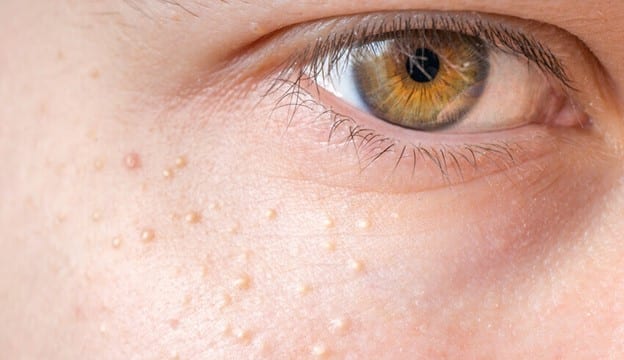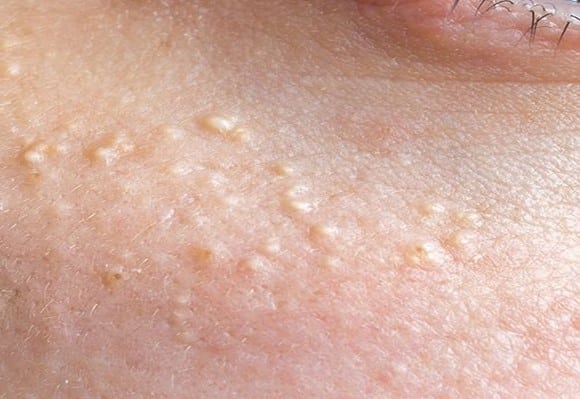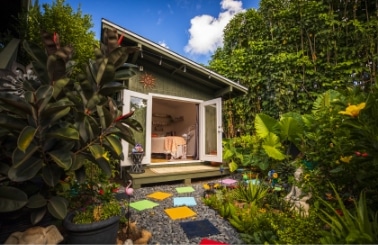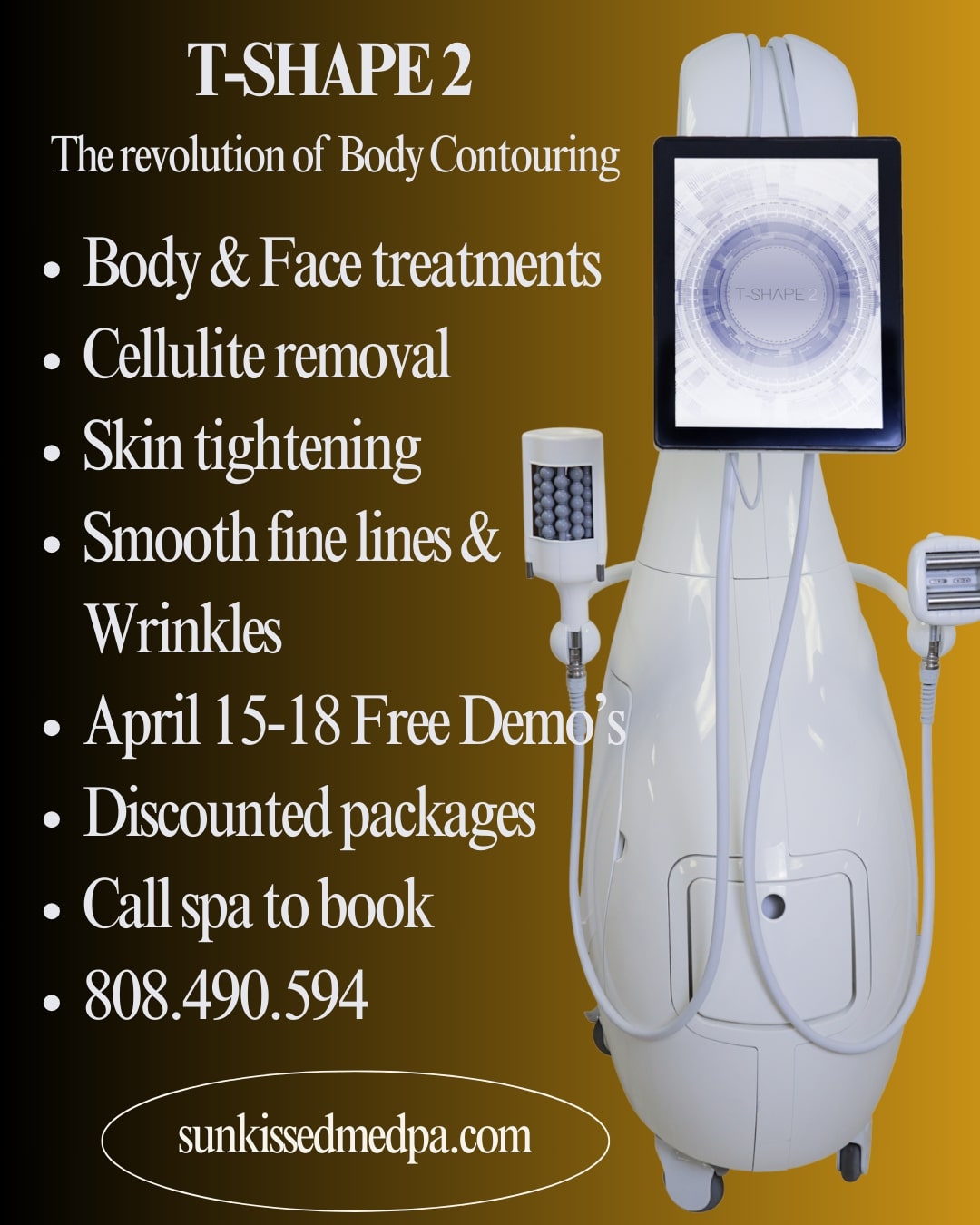
Milia, or “those little white bumps that just won’t go away,” may be less obvious than acne and blackheads but can be just as annoying. Appearing as tiny, hard lumps under the skin, milia often mar the complexion under the eyes or on the cheeks and are difficult to remove. But fear not! Sunkissed Med Spa has you covered with an explanation of the common categories of milia along with the methods and products you can use to smooth out your skin.
What are Milia?
Milia are small cysts filled with keratin, a type of protein found in skin tissue, hair and nail cells. When keratin gets trapped under the skin, tiny white bumps develop, often in small clusters. These stubborn flaws don’t become red and inflamed like acne but instead slowly build up under the skin and remain a white color. While a whitehead is also a white bump and a closed comedone (a pore blockage covered by the skin), whiteheads also contain sebum as opposed to the keratin found in milia.

Milia can appear on people of all ages, it is not infectious and has no clear cause, but it can be aggravated by sun damage. Some common categories include:
- Neonatal milia (milia on newborns)
- Primary milia
- Milia en plaque
- Secondary milia
Primary milia is the most common form of milia, found on both children and adults typically around the eyes, cheeks or forehead. Neonatal milia affects around 50% of all newborns. It cannot be treated and will clear quickly on its own. Primary milia is the most common form of milia, found on both children and adults typically around the eyes, cheeks or forehead. Milia en plaque is a less common form of milia and, unlike primary milia, is a collection of multiple milium that occurs as a plaque (a broad raised area of the skin). Secondary milia refers to milia that appears after a trauma to the skin, such as injury, burn or blistering. When dealing with milia, it is important to first have a skin analysis with a professional to determine the best method to treat the condition.
How To Get Rid of Milia
There are two effective ways of eliminating milia: extractions and exfoliation. While Milia will often clear up on its own, if your bumps are sticking around for upwards of six months, extraction may be the only way to fully clear them. Because milia are so small and covered by the skin, they can be difficult to remove. Although it can be tempting to attack milia on your own, we strongly advise against any at-home picking and popping, as it can lead to inflammation, infections and scarring. Instead, visit a dermatologist or licensed esthetician who is equipped to extract milia successfully. Typically, they will use a small blade or needle to make a tiny incision to release the blockage. They may then apply additional treatments to ensure the skin is kept moisturized and strong.
In addition to extraction, exfoliation (both professionally and at home) is essential for treating milia. We recommend starting with an appointment at www.sunkissedmedspa.com Not only can an aesthetician use a higher strength professional treatment to open the pore and smooth away any blockages, but they can also perform a skin analysis and recommend home care products. When choosing products, you will want ingredients that help soften the skin, speeding up the natural process for milia to pop out on their own and prevent further buildup. Your esthetician may recommend a physical or chemical exfoliant depending on your skin type and the category of milia you are experiencing. Some exfoliating ingredients you may come across to treat milia include:
- Glycolic acid
- Lactic acid
- Salicylic acid
- Retinol
We thank you for taking the time to read this and hope you found this article useful. We hope you are feeling inspired to pamper yourself and prioritize some well-deserved “Me-Time”.
Remember at Sunkissed Med Spa we’re always here to make your spa dreams come true. Until next time, keep calm and Spa on!!
Love & Aloha
Heide



